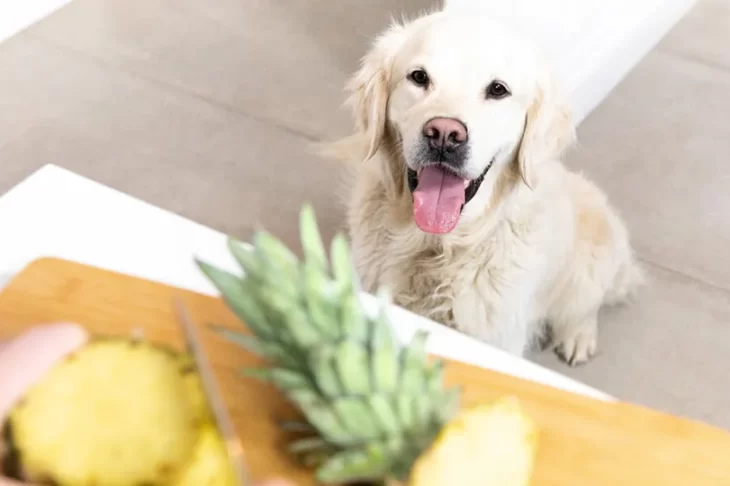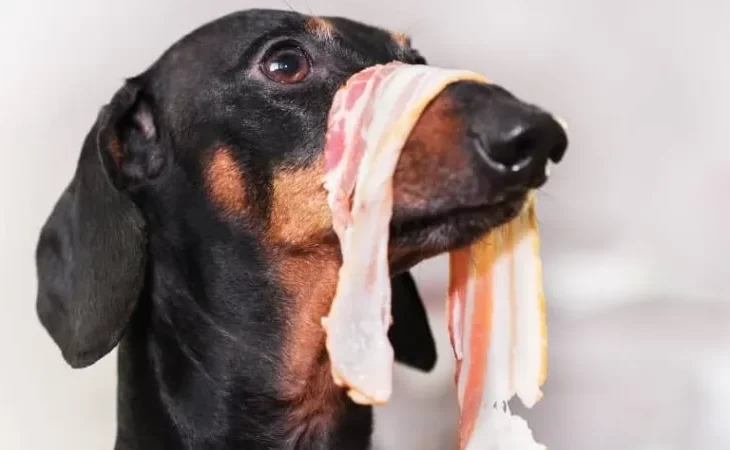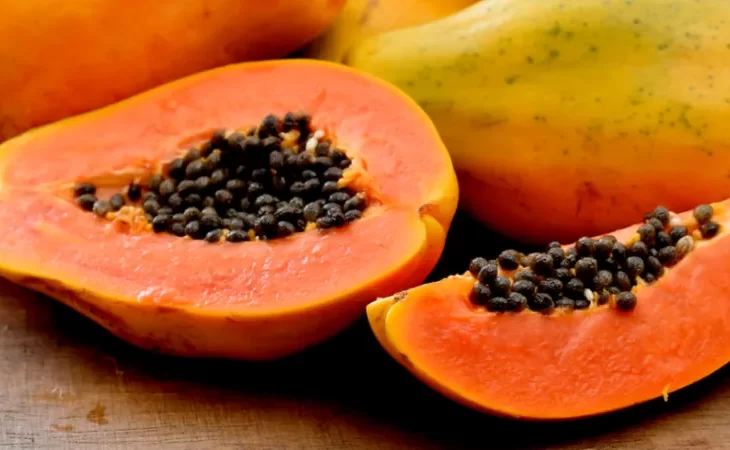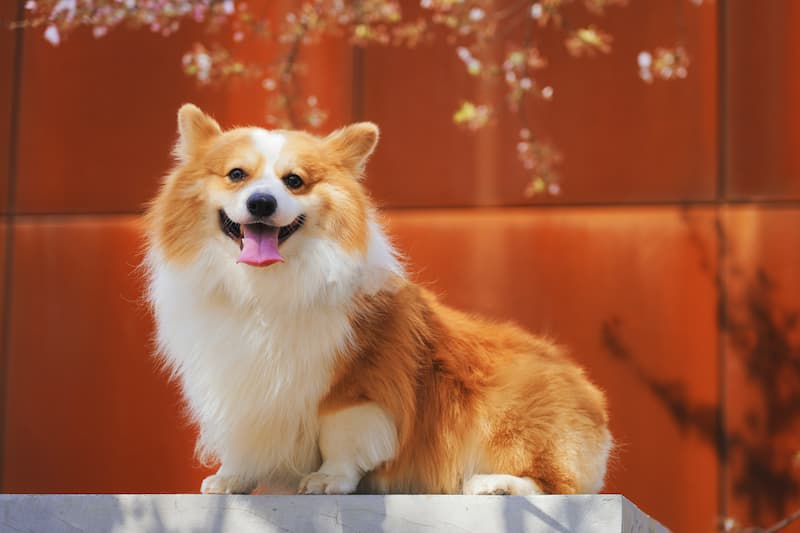
Can Dogs Eat Cat Treats? Are Cat Treats Bad For Dogs?
Yes, dogs can eat cat food. Even though cat treats are made to meet very different needs than those of dogs, they aren’t necessarily harmful to your dog. A few cat treats here and there shouldn’t hurt your dog, but you shouldn’t give them frequently or make it a habit with your dog.
Do you feed cat food to your dog? Are you thinking about buying the same food for your dog and cat?
In this article, you will learn more about your pet and receive the answers to all of your reasonable questions. So sit back, relax, and let’s get started right away.
Table of Contents
Can Cats Eat Dog Treats?
Although they can consume dog treats, it is best to avoid giving them to your cats. Dr. Heinze, an assistant professor in the Department of Clinical Sciences at the Tufts Cummings School of Veterinary Medicine, claims that some ingredients in dog treats, such as ethylene glycol, may be harmful to cats. Small amounts of it are occasionally added to dog treats to help them retain moisture. Regularly consuming dog treats and treats could result in serious issues like kidney stones and other kidney issues. Taurine, which is essential for canine heart health but is lacking in dog treats, is also needed by cats.
Cat Treats: All You Need to Know
Cat treats are necessary because a cat’s nutritional requirements differ from those of a human. Let’s delve deeper into the makeup, feel, and advantages of cat treats.
Composition of Cat Treats
Cat food needs a variety of nutrients in order to be healthy. These can be made from a wide range of materials. Cats consume different kinds of meat, fish, vegetables, cereals, some fat, and vitamins and minerals. Your cat will receive the nutrients she requires while also enjoying this nutritionally balanced diet.
You should be aware that each brand’s cat treats contain different amounts of each ingredient as well as different ingredients altogether.
The Texture of Cat Treats
The main distinction between foods with various textures depends on the amount of water or moisture present. The cat treats are available in three different textures: dry, moist, and canned. The final one has the most moisture.
So, the least expensive dry cat treats, also known as kibble, are quite hard and crunchy. The moist cat treats, on the other hand, are chewy and considerably softer. Last but not least, there are canned foods that contain sauce and meat pieces.
Pros of Cat Treats
- Your cat will get all the nutrition it needs by consuming cat treats.
- You can avoid wasting time and effort.
- Cats remain content and unaffected by gastrointestinal issues like appetite loss.
- It is a good source of protein that comes from meat.
- It will stop you from giving your cats too much protein.
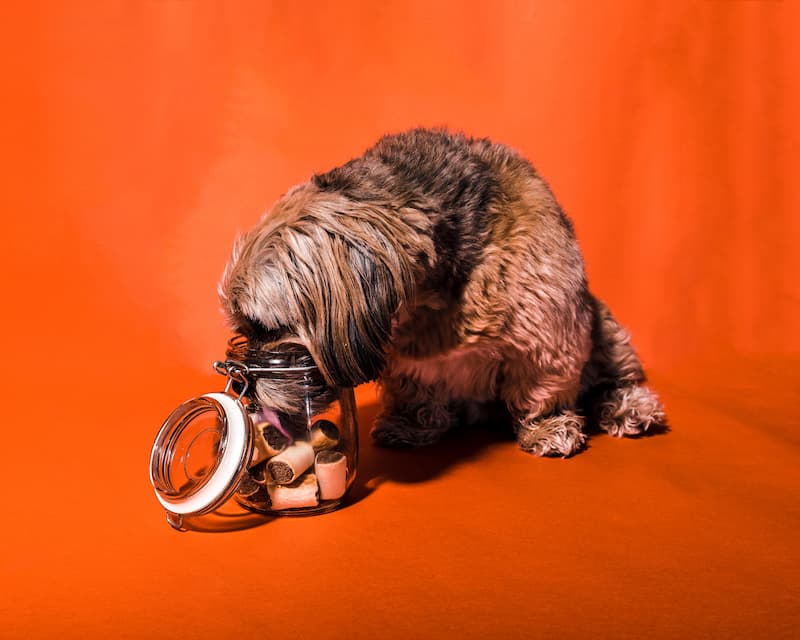
Dog Treats: All You Need to Know
Like cats, dogs have very different nutritional needs from humans, so feeding them only human food will not keep them healthy. Giving your dog the right dog treats is therefore essential. The primary factor affecting a dog’s health is its eating routine.
Let’s take a quick look at the ingredients, texture, and advantages of dog treats.
Composition of Dog Treats
The primary components of dog treats are good protein, fat, fiber, and water. These fundamental components can be obtained from a variety of food sources. However, meats, meat byproducts, cereals, grains, vitamins, and minerals are all frequently found in dog treats. Additionally, it contains palatants and animal byproducts like animal fat. While palatants are manufactured artificially to make raw or cooked meat smell enticing to dogs, animal by-products contribute to the natural fragrance of both raw and cooked meat.
Nevertheless, depending on the manufacturer, the ingredients in dog treats can differ significantly.
The Texture of Dog Treats
Similar to cat treats, there are three different textures available for dog treats. The texture is similar to cat treats in terms of roughness. dry or kibble, moist and canned.
To keep the dogs entertained while they eat, different food textures should be available.
Pros of Dog Treats
- The majority of dogs do not receive a diet that is adequate or necessary, but if you give your dog treats, you will see an improvement.
- The fur and coat of your dog will get healthier as the diet is balanced with dog treats.
- dog treats is a rich source of quality protien.
- You’ll experience fewer instances of gastrointestinal upset, such as upset stomach and pain in the abdomen.
- Both you and your dogs will benefit from the time savings. It will safeguard your dog’s health against degenerative illnesses.
Dog Treats Vs Cat Treats
Let’s start by examining the key distinctions between the best cat treats and dog treats. Both species can find a wide variety of treats on the market, but dogs typically have a wider selection.
Dog chews, dried natural treats, and bones are typically made exclusively for dogs; there is no equivalent for cats. This is due to the fact that cats aren’t naturally chewers and instead prefer to consume recently killed prey that is small enough for their teeth to quickly crunch through bones. While dogs frequently prefer long, chewable treats that resemble sticks, cats prefer snacks that they can consume quickly before moving on.
On the other hand, the best cat treats are comparable to dog training treats in terms of size and composition. Although many less expensive brands will include grains and plant materials to create a treat that resembles kibble, they are frequently made with meat.
You’ll notice that the ingredients in cat treats and dog training treats at the grocery store are quite similar. In addition to being slightly more likely to contain chicken and fish than beef and lamb, cat treats frequently have a stronger odor than dog treats. Dog treats are frequently bigger than cat treats and might have more calories in each one. Finally, when comparing similar products, cat treats are typically more expensive than dog treats.
Can Dogs and Cats Eat the Same Treats?
As a result, let’s investigate whether dogs can consume cat treats. Fortunately, the answer is yes for the owners of both animals. Dogs can generally eat cat treats. But what about cats? Can they consume dog treats? A little more complexity is involved in the solution. Even though a single dog treat is unlikely to hurt a cat, it’s important to be aware that occasionally dog treats contain trace amounts of ingredients that are poisonous to cats. They might include things like ethylene glycol, garlic, or onions. These treats will have been produced and thoroughly tested to be safe for dogs, but they won’t have been tested on cats.
Whilst cat treats are generally safe for dogs, there are a few basic rules you need to apply in order to safely feed cat treats to your pooch:
Don’t Make a Habit of It!
Giving your dog cat treats on a regular basis is not a good idea. They are different species with distinct dietary requirements, after all. Most dogs find cat treats to be unappealingly small, and many would prefer to have one of the best, longest-lasting dog chews instead.
Stick to the 10% Rule
Whether for a dog or a cat, treats lack essential nutrients and are therefore nutritionally deficient. This means that they should never account for more than 10% of your pet’s daily calorie allowance, along with other insufficient sources. Look at your dog’s daily allotment of calories, then subtract 10% to determine how many cat treats they can consume. Now deduct calories for any table scraps, dog treats, dental chews, or other snacks they consume. What remains is how many calories they can have in cat treats, and there won’t be many.
Check the Ingredients
Before giving your pet anything, it’s a good idea to look through the ingredients list for any warning signs. Although it’s unlikely that cat treats will contain ingredients that are toxic to dogs, they sometimes have a very high fat content that can make susceptible dogs susceptible to pancreatitis.
What Happens If My Dog Eats Cat Food?
Whether your dog ate cat food in large quantities or on a regular basis will determine what happened afterward.
It’s likely that not much will happen if your dog manages to steal some food this one time. You shouldn’t have to worry about your dog getting poisoned because cat food shouldn’t contain anything toxic to dogs.
However, there is a good chance that they will become ill if they are able to consume a lot of cat food, even if it only happens once. It should come as no surprise that cat food is not made with canine digestion in mind, so consuming a lot of it is very likely to result in digestive upset. After eating a lot of cat food, your dog might suffer fromvomiting,diarrhoea, stomach cramps, and flatulence. Dogs withsensitive stomachs are more likely to be sick after eating cat food, and they can become ill after eating a smaller quantity of cat food.
Please consult your veterinarian for guidance if your dog consumes cat food and displays any symptoms of illness.
The consumption of cat food by dogs on a regular basis can lead to health issues, so this is definitely not a good idea. If you have a dog and a cat, you must figure out a way to stop your dog from pinching the cat’s food.
What Happens If Dogs Eat Cat Food Regularly?
There is a reason why food is different for dogs and cats. Every type of food is tailored to the biology and needs of the individual animal. Because cat food is strangely balanced to meet the needs of cats rather than dogs, feeding your dog cat food on a regular basis can have disastrous results.
Canines are omnivores, so they can actually have a much more varied diet than cats can. Although they require a lot of protein and fat in their diet, they do not require as much of either as a cat. Because cats are true carnivores, their food is difficult for a dog to digest, so cat food contains much more fat and protein. A dog can have too much protein, despite what might sound like barking madness.
Unfortunately, a dog will probably gobble up any cat food they find, whereas a cat is less likely to find dog treats tasty. This is so that cat food will appeal to cats and their particular palates, which are limited. The number of taste buds in a dog’s mouth is more than twice that of a cat’s, so cat food will likely taste delicious to your dog and almost be impossible to resist. However, you shouldn’t permit your dog to regularly consume cat food as it will probably be bad for their health. For example…
Your Dog Might Pile on the Pounds
Dogs who eat cat food regularly are more likely to becomeobesebecause cat food is more calorie-dense and has a higher fat content. Dogs are more likely to gain weight than cats are, so it is imperative that they consume a balanced diet and engage in regular exercise. On the other hand, obesity reduces a puppy’s life expectancy by 2.5 years on average and increases your dog’s risk of developing secondary conditions like diabetes or cancer.
At Risk of Pancreatitis
The higher fat content of cat food also means that your pooch is at risk of developingpancreatitis, paw-ticularly if they are eating it regularly. Your dog will require prompt veterinary care if they develop pancreatitis. For the rest of their lives, they will also need to follow a low-fat diet in order to stop further flare-ups of the condition.
The Balance of Vitamins Isn’t Suitable for Dogs
The levels of some minerals in cat food can actually be dangerous for your dog because cats need much more nutrients from their food than dogs do. For dogs and cats to be healthy, vitamin D is essential. A dog who consumes too much vitamin D may become ill. Cat food, however, contains much higher amounts of vitamin D. Make sure your pet consumes a diet tailored to their unique biological needs because excessive vitamin D intake can cause kidney failure and even death.
Owners chose a natural diet rather than one that was fortified after learning that some brands of dog treats were recalled in recent years because they contained toxic amounts of vitamin D.
There is a chance that your dog could develop a dietary deficiency if they are regularly fed cat food and do not consume their own food. Not having the proper balance of nutrition will also mean that your dog ismore likely to become illand you may notice symptoms such as a thinning, dull coat.
Read about
Cats Vs Dogs: Nutritional Requirements
As was previously mentioned, cats are obligate carnivores, meaning they must consume meat. It is biologically necessary to provide protein derived from meat in order to meet the needs. As a result, the majority of the cat treats are made from animal meat. But because they eat both meat and vegetables, dogs need treats that satisfy both of their cravings.
Here are a few points that will help you in getting a better picture about the difference between nutritional needs of cats and dogs-
- Niacin and the active form of vitamin A, both essential for healthy eyes and skin, cannot be produced in sufficient amounts in cats. They need specially crafted food to meet their needs as a result.
- Cats cannot produce arachidonic acid, so they must get it from their diet. Arachidonic acid is a crucial fatty acid. Dogs, however, have the ability to produce this crucial fatty acid.
- For cats, dietary protein is more important than for dogs.
Healthy Dog & Cat Homemade Treats
Here are some healthy homemade treat alternatives that your dogs and cats alike will also enjoy:
Frozen Bone Broth
Surprise your cats and dogs with a frozen “pupsicle” which is frozen bone broth. A well-known favorite among animals is frozen broth flavored with a little raw goat’s milk.
Frozen Banana Slices
Slices of frozen bananas are not only tasty but also nutritious. Even though they contain sugar and are rich in vitamins, fiber, and potassium, just have one or two slices.
Chicken Liver Slices
Your pets can receive this treat either raw or cooked. Give your pets just a bite or two because it contains a lot of protein and fat. Make sure to obtain it from a reliable source.
Dried Sweet Potatoes
Because it is tasty and chewy, this is yet another pet favorite. In addition to being healthy, it is excellent for digestive health due to its high dietary fiber content. Along with being low in fat and high in beta-carotene, it also has manganese and vitamins B6 and C.
What Happens If Dogs Eats Catnip Treats?
Now that you know the answer to your question, “Can Dogs Eat Treats From Cats?” it’s time to talk about the potential dangers of giving it to them on a regular basis or in large amounts.
Your dog could become ill if he consumes a lot of cat treats, even just once. After consuming a lot of cat treats, your dog might experience flatulence, loose stools, stomachaches, and intestinal discomfort.
On the other hand, regular cat treats use could make your dog obese, have a bad coat, or even develop allergies. Many people with these allergies experience itchiness and ear infections.
Recap
It won’t harm your dog if they steal a small amount of cat food. But that does not mean they should eat cat food just because they can tolerate it.
It might make your dog ill if they consume a large portion of cat food. Although many of the ingredients in cat food are similar to those in dog food, your dog should never regularly consume cat food because the nutritional balance is entirely different and poorly suited to a dog’s digestive system and needs. Regular consumption of cat food can lead to pancreatitis and obesity, among other issues.
The same holds true for your cat in the meantime. Although dog treats shouldn’t be toxic, they definitely shouldn’t eat a lot of it or chow down on dog treats regularly instead of healthy cat food.
Why not feed your dog dog treats instead of cat food? Even better, feed them a nutritionally balanced, healthy and wholesome dog treats such asPure. Pure provides dogs with scrumptious nutrition to help them stay happy, healthy, and eagerly anticipate meals.

